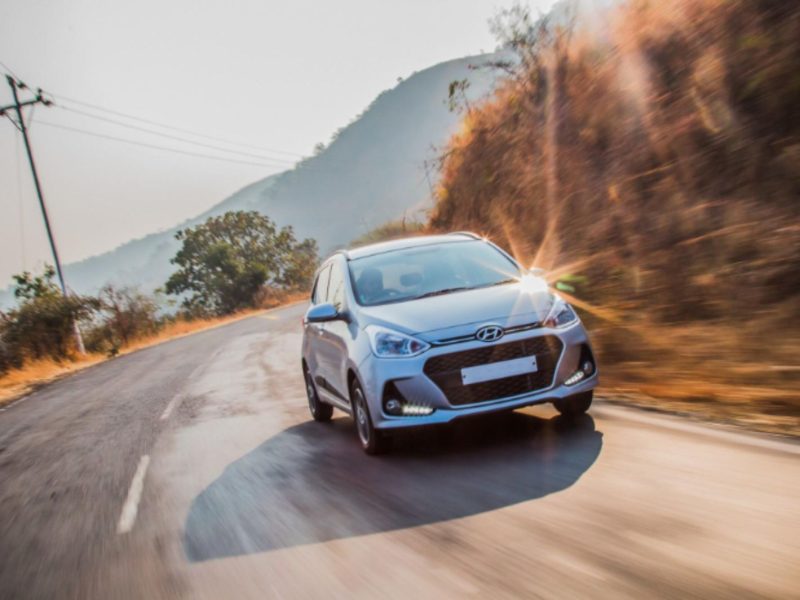Icy and snow-covered roads are a significant challenge to overcome when driving to school or work after a storm. An estimated 156,000 accidents occur due to these road conditions in the United States. Buying a car equipped to handle inclement weather is essential if you live in a climate that experiences significant precipitation during the winter.
The most significant debate you’ll encounter for driving in snow is whether AWD or FWD is better suited for the conditions. Both options have pros and cons, and weighing them is the best way to decide.
The good news is that you’ve found the perfect place to learn more about each drivetrain option for optimal vehicle traction. Continue reading to enjoy a safe driving experience today!
Table of Contents
What Is Front-Wheel Drive?
Front-wheel drive is a variant of a two-wheel drive system. The engine and powertrain send the power and traction to two wheels to propel the vehicle in the desired direction. When on the throttle, a front-wheel drive car receives vehicle traction from the front wheels.
Most passenger vehicles in the US are front-wheel drive options. They’re less expensive to manufacture, making them more affordable for consumers. It’s an excellent way to improve vehicle traction when driving up or down steep roads and landscapes.
A front-wheel drive car is an excellent option for new drivers. It’s safe, reliable, and predictable. It’s also worth exploring how these cars handle winter conditions to help you determine if AWD or FWD is a better fit for your needs.
Front-wheel drive cars are one of the better options for driving in snow. The weight of the car’s engine puts pressure on the front wheels, helping the car maintain traction in slippery conditions. You can trust your front-wheel drive vehicle to handle moderate snow.
It should meet the needs of individuals living in climates that receive decent snowfall. The vehicle traction will help you enjoy a safe drive home from school or work.
What Is All-Wheel Drive?
Cars equipped with all-wheel drive enjoy power and traction to all four wheels when on the throttle. The systems used will vary from one manufacturer to another. Still, they follow the same premise of delivering power and traction to each wheel to ensure a safe and secure driving experience.
Some systems deliver more power to the rear wheels, while others focus more on the front. Intelligent AWD systems sense when a wheel is losing traction and will counter the issue by sending more power to wheels that can still propel and control the car.
It’s an excellent option if you live in a snowy climate. You’ll have no problems with snow and slush, and an icy road will be a walk in the park if you install winter tires on your vehicle.
Your AWD car will detect which tires need more power and traction. You can focus on road conditions while your vehicle ensures a smooth ride in all road conditions.
The only drawback when purchasing an AWD vehicle is the price tag. They’re more expensive than FWD cars, though the safety and confidence you’ll enjoy with an all-wheel drive model is worth the higher price.
Tips for Driving in Snow With AWD or FWD
Whether you buy a FWD or AWD car, there are tips you can use to protect yourself, your passengers, and your new vehicle. Essential tips will help you get home safely after a snowstorm. You can use these tips to supplement your car’s driving capabilities and enjoy better vehicle traction.
Here’s a look at the best tips when you’re behind the wheel on a snowy or icy road.
1. Stay Composed
The worst thing you can do when driving in the snow with an AWD or FWD car is to panic. Never slam the brakes when you feel the car losing traction. Pump the brakes repeatedly to maintain control of the car’s direction.
Modern cars are equipped with ABS systems to assist you with stopping the vehicle in slippery conditions. The system will pump the brakes for you to help you maintain control.
Avoiding hard braking or acceleration when entering a turn or corner is also wise. The vehicle’s back end could slide out and create a dangerous situation for yourself and other drivers.
2. Clear Your Car
A rookie mistake many new drivers make is neglecting to clear the car of snow and ice before hitting the road. It’s best to ensure visibility out of all windows to ensure defensive driving. Brush off all windows and lights to help other drivers see your car if the snowfall increases or the wind picks up.
3. Maintain a Safe Distance
Getting over-confident when driving an AWD or FWD car in snowy conditions is simple. One of the best ways to ensure safety when gaining experience driving in snow or ice is to maintain a sizable distance between your car and the cars around you.
You’ll create a more considerable margin for error should something happen that requires braking. Drive slowly and keep a safe distance from the car in front of you. You risk losing traction if you slam the brakes.
4. Build in Extra Time
One of the worst mistakes people make when preparing to drive in winter conditions is not providing enough time to arrive at the destination. The stress caused by being late to work or school could cause you to make rash decisions in your AWD or FWD car.
Providing extra time to reach your destination is an effective way to maintain a relaxed and calm attitude. The lack of pressure will help you focus and enjoy the ride in your new Porsche Cayenne.
Enjoy Improved Vehicle Traction This Winter
Learning to drive in winter conditions requires time, research, and patience. Finding the best car to fit your needs is essential, and you must compare your options to determine if AWD or FWD is a better fit for your needs. All-wheel drive compensates for a lack of vehicle traction, while front-wheel drive can handle moderate amounts of snow.
There are several factors to consider when investing in a new car or SUV. Read our Automotive content for the tips to get the most value from your ride today!


